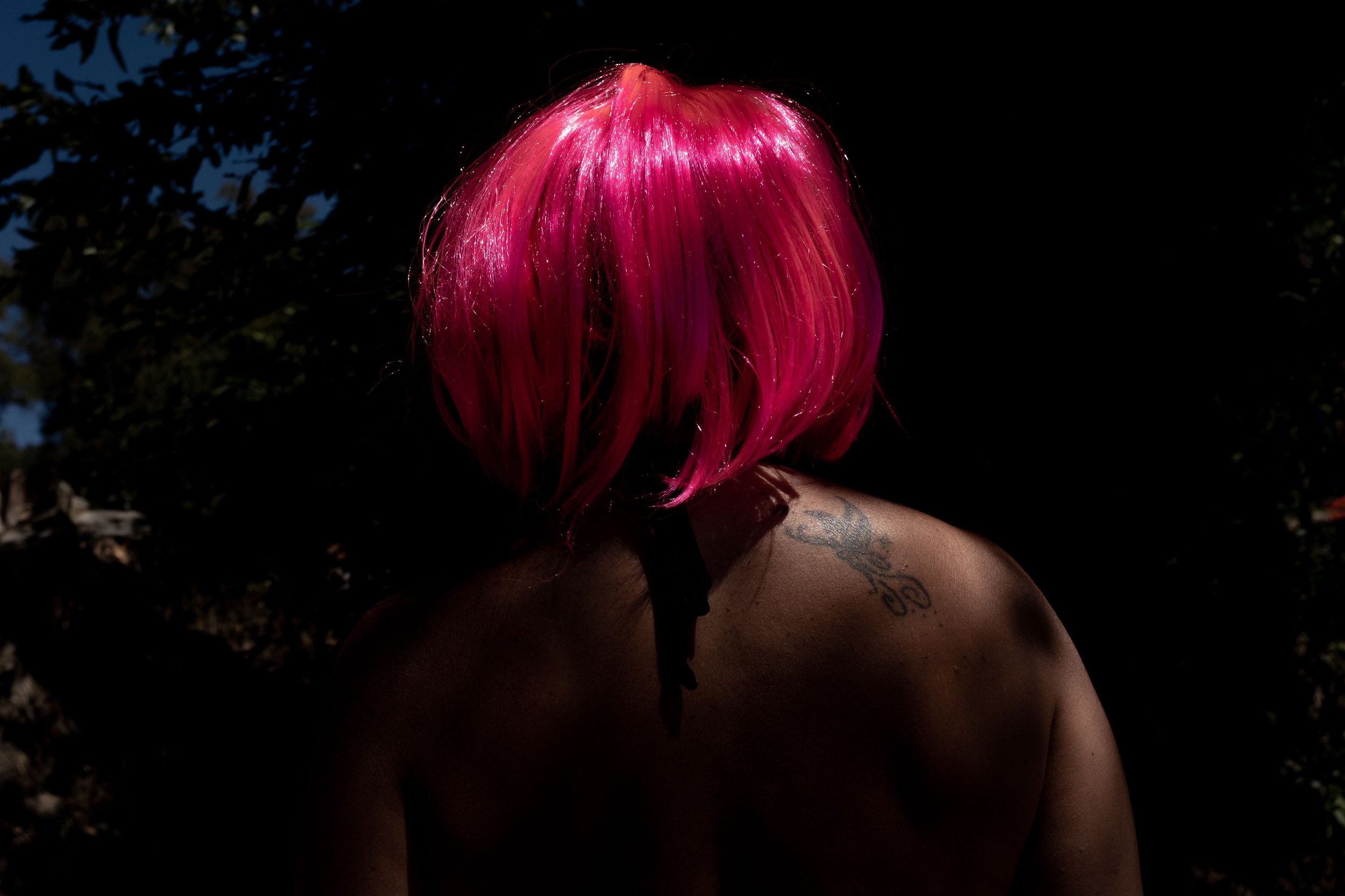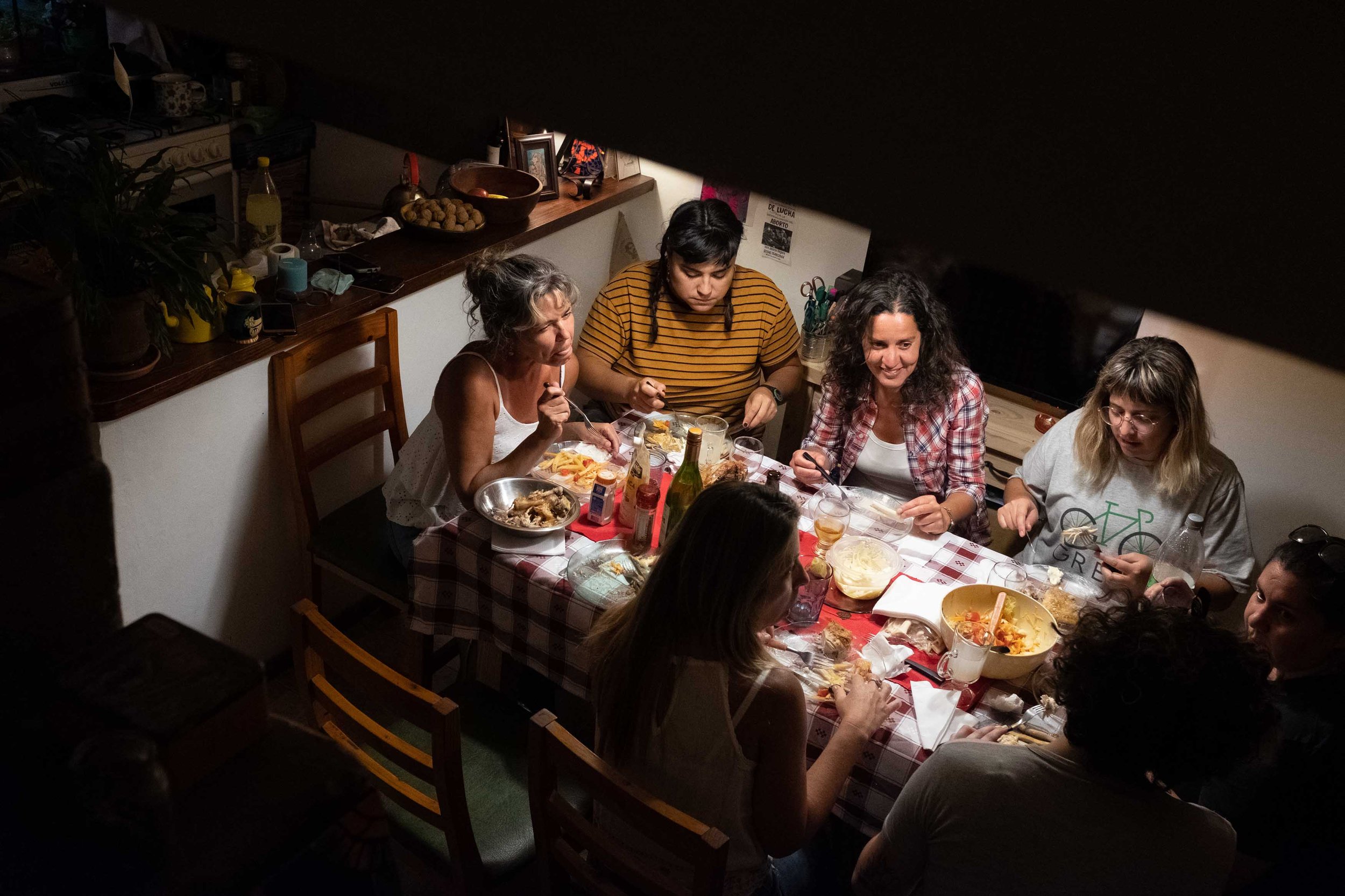1968 resonates in the collective memory as an evocation of the airs of freedom and rebellion that swept through several countries, from the Prague Spring to the French May. It was a spirit of change far removed from the context in which María Inés Farías was born that year, into a religious and traditional family in Tucumán, northern Argentina, shortly before the beginning of the military dictatorship in 1976. However, the rebellion, the search to break an imposed order would gradually come into her life, until she became a recognized activist for the right to abortion and its legalization in the Argentine Patagonia.

Childhood in Tucumán
María Inés remembers San Miguel de Tucumán, cradle of the Argentine nation, as a conservative environment. As for her family: an orphan father and an evangelical mother of German origin, whose white skin was a determining criterion to celebrate the union from which four women would be born. In order to get married, Maria Agnes’ mother had to publicly renounce her evangelical faith; a humiliating and witnessed punishment, which did not prevent her from returning to the Free Brethren Church four years later.
This decision impacted the rigor in the upbringing of her daughters, which also had the approval of a father to whom the control over bodies promoted by this Church seemed an adequate idea. The education of María Inés was full of prohibitions and punishments, of straight paths with no room for desire or first kisses; an unbreakable bubble. But, at the same time, a happy, autonomous and orderly bubble like the one in The Truman show, a film that mobilized her by presenting itself before her eyes as a mirror of her own life.
She only left the bubble of childhood to enter another one: that of marriage. She arrived at the age of 24, almost as a matter of urgency. María Inés was working as a teacher, and A., her doctor boyfriend, was about to leave for Neuquén, in the south, thousands of kilometers away from Tucumán and the family nest. “I couldn’t imagine living alone, without them,” she recalls.

Taking distance and breaking the curtain
Copahue, Neuquén, Las Lajas, Zapala and finally San Martín de los Andes: an intense geographical movement that accompanied another displacement: that of ideas, beliefs and the parameters of happiness. From an imposed and suffered departure, María Inés was to find along the way the keys to her freedom.
“I began to connect with people of the world, outside the evangelical community,” she recalls, something she had previously seen as wrong. Her smile allowed her to socialize without problems; although in Neuquén she still taught in an evangelical school, she and her husband had stopped going to church much. In 1997, in Las Lajas, she found a job in a secular school: a new step towards her integration into the “outside” world.
In that world appeared a decisive companion, Claudia Bolaña. Claudia changed his life with reading recommendations. Through Bakunin, Castoriadis and other sociological texts, María Inés began to revise the idea of God.
The birth of her first child deepened her desire to emancipate herself from her husband, who had little interest in fatherhood. In 1997 she dared to speak about divorce, for the second time, empowered by a new force, a new job outside the Church, in a school where she was influential in the formation of a new generation of teachers. But divorce still did not seem to be a proper and intimate matter, between two adults capable of reasoning and deciding about their common future: A. called her in-laws to convince her daughter to stay with him and trust in God. Instead of divorce, a second child arrived, and yet it was a joy for María Inés. She then gave up the idea of separating. This first attempt to leave for another life still had obstacles; although she worked, she still did not manage the money or make the important decisions.
“In the same person lived bravery and cowardice. I couldn’t imagine being able to handle money, the upbringing of my children. I was always subordinate, except in my work, where I was independent. I have a girlish tone, my appearance added to the idea of submission. I was terrified to face my life,” she recalls.
Arriving in 1998 in San Martin de los Andes, a larger city, opened up new opportunities for her. One night, on the bed in the matrimonial bedroom, María Inés confessed to her husband that she no longer believed in God, that she had stopped living with the fear of punishment and hell that had accompanied her until then. “I was ready for the orphaning of everything I was raised with. It took me a week of panic attacks and anguish.” Years later, in 2004, she finally divorced, with the support of her co-workers, all separated.
In the middle of a family lunch in 2012, her mother told her “we want to congratulate you for the woman you are”. Despite her rejection of the idea of divorce, they had supported her with the necessary paperwork and gradually changed their opinion of divorced women. For her, the decision also involved the children, whose father was not fulfilling his duties as a father.

Understanding the silences
Dismantling the traditional family model she grew up with happened alongside reading and understanding the world around her in a new way. In the 2000s, the daughter of the janitor of the school where she worked passed away. She was 33 years old, with three children. During the closed-casket funeral, everything seemed secret, shrouded in a heavy silence. Nothing was said about the death of the young mother, a farewell without feelings. María Inés dared to ask a colleague what had happened. She revealed, with some embarrassment, that she had died of miscarriage. Rather due to the general infection resulting from a clandestine abortion performed with a catheter by “the old woman” from a farm in San Martin de los Andes. This girl was one of many, and this abrupt reality generated in María Inés the need to document herself about this practice. She began to convey this concern in her privileged environment as a white woman and family of a well-known doctor in the area.
“All the men bragged about having paid for their wives’ abortions,” recalls the woman who was about to become a rights activist. This business revolved around the dynamics of deciding over someone else’s body. She began to feel rejection towards these men and how an incipient feminism was born in her. Despite the fact that it was a topic that was rarely discussed in her environment, the idea of abortion did not generate any shame or discomfort in her. Perhaps because, in a way, abortion had been part of her personal history for a long time.
She remembers the parents’ room; her mother in bed crying with a hint of guilt. She was a child and didn’t want to go to school when she saw her mom like that. She imagined at the time that they had lost twins, from what her parents told her. Years of suspicion and assumptions ended with a conversation with her mother, when she was beginning to suffer from dementia and María Inés was entering militancy. She broke the taboo in an intimate moment between generations, to relieve her mother of the secret she had carried until then, a faithful evangelical believer all her life. It was a relief for both of them, even though this conversation was not well regarded by the rest of the family.
These experiences began to sprout and take shape with her participation in the feminist group Juana Azurduy in 2005, where she managed to find the personal strength she lacked. But the encounter, or rather a clash with the organization La Revuelta in San Martin de los Andes, was a turning point in her feminist commitment. The audacity of its militants fascinated María Inés, whose referents until then had been men. She felt attracted to them and their approach to feminism: “It was very strong to see these women fighting the boys with megaphones in the street”.
Identity as a lifeguard
La Revuelta and its “socoristas”, feminists who perform abortions, always acted and spoke out in the open, spreading how to perform an abortion with misoprostol without any taboo. In the summer of 2012 they asked Maria Ines for help in receiving some packages. “I knew I was helping to abort”, she clarifies, until finally Ruth, an iconic figure of La Revuelta, proposes her to do the whole process of accompaniment: the work of first responders in San Martin de los Andes was born.
On a loose sheet of paper, thinking that there would be only a few, María Inés began to write down the data of the accompanied women. Today this sheet is glued to a notebook, the first of many she still keeps, full of names and dates, lives and stories. “Even the ‘celestes’, the color of the camp against the legalization of abortion, abort with us. Many who are in their meetings, had abortions with me.” It is a memory of sorority; but also a demonstration that abortion is a reality that crosses all ages, territories, social classes and religions. More than half of the women who have abortions with first responders practice a religion.
“Some friends at the time were afraid of me, of my uttering the word ‘abortion’ in public. Many stayed away,” regrets María Inés. But this did not change her mind or attitude; she felt she had a weapon in her hand. Her contacts as the ex-wife of a well-known doctor allowed her to start talking inside the hospital with its director and to notify that she and her colleagues were accompanying women in this process. “That people know, that they find out, is one of the most important axes of militancy.”
From the classroom to the streets, María Inés talks about abortion in her environment. It is a daily and sincere practice. “My identity as a lifeguard is woven with my person,” she says. Before the green tide, this modality and presentation were more shocking, but she was never discouraged. As an undergraduate teacher and teacher educator, she always presented herself as a lifeguard in the classroom.
In one of her classes she decided to work on stories of women who had had abortions, based on a book of first aiders. Thirty students in her classroom; conflicting positions. “Stop talking about abortion,” shouted one of her students before she began to cry, while others came out to defend the teacher. María Inés did not take it as an attack; on the contrary, it generated what was needed: a space for expression on a topic that previously could not even be mentioned. At the end of the class, the student approached her. In tears and in intimacy, she confessed to her teacher that when she was 16 years old, her boyfriend at the time put her under anesthesia. She woke up bloody, on a stretcher, aborted.
The door opened by María Inés allowed her student to unburden herself, to let go of a weight of years. It is just another door, one of many that have opened since the one she herself went through years before. And to achieve this, the first-aid teacher has an advantage: she speaks from shared experience and not from anger or hatred: “I was an evangelical, anti-everything, defending the patriarchy and not the happiness of women; I know what it is.”
* This report was supported by the International Women’s Media Foundation’s Reproductive Health, Rights, and Justice in the Americas.

